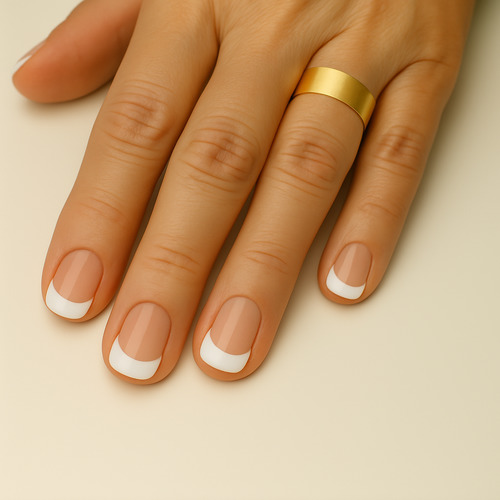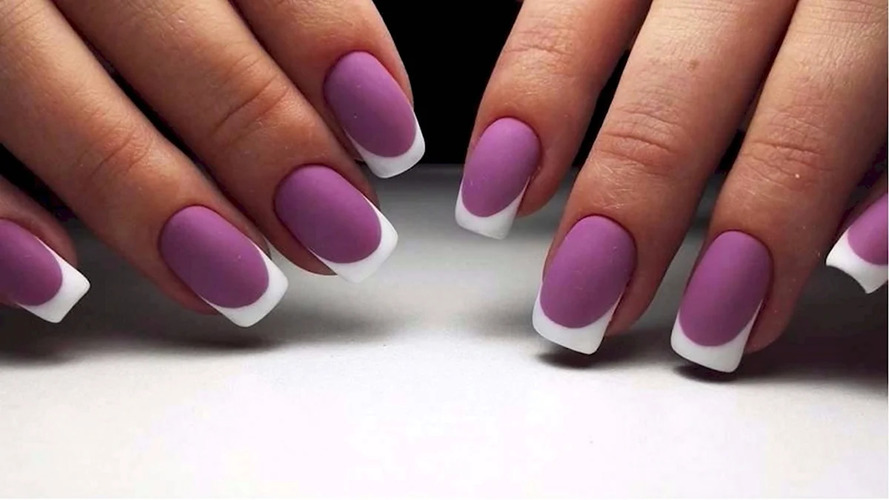French manicure is an eternal classic. It is associated with neatness and sophistication. However, even this seemingly flawless design has its pitfalls. The slightest mistake — and the manicure can turn from stylish into outdated or tasteless. Let’s review 7 common mistakes that can ruin even the highest-quality French manicure.
1. Smile line that is too wide
One of the most common mistakes when doing a French manicure is making the “smile line” too wide. Such an accent visually shortens the nails and makes the fingers look shorter and bulkier. Instead of a refined, elegant transition, it becomes a heavy visual element that draws all the attention to itself and disrupts the harmony of the overall look.
The white line should occupy about one-fifth of the total length of the nail. At the same time, the smile line should follow the natural curve of the cuticle: the more pronounced the curve at the base of the nail, the deeper the smile line should be. This is especially important for short nails — too wide a white stripe can easily break the harmony and visually shorten the nail plate.
2. Incorrectly chosen base color
A classic French manicure assumes a semi-transparent pink-beige base that looks natural. However, many people choose either too white or too dark beige shades, which make the manicure look sloppy or “heavy.”
The base color should be selected according to your skin tone. Warm undertones suit soft beige or peach shades; cool undertones look best with delicate pink or milky tones. A neutral base should blend with the nail plate and give a well-groomed appearance.
3. Neglecting top coat and nail care
Even a perfectly painted French manicure will lose its appeal if the polish starts chipping, dulling, or yellowing. Dry cuticles and hangnails can also spoil the overall impression.
Always seal your manicure with a good glossy top coat, refresh the coating as needed, and don’t forget cuticle oil. Well-groomed hands are the best backdrop for any design.
4. Excessive nail length
The main focus of this French manicure is on restraint and a traditional shape. When a French manicure is done on significantly longer nails, it loses its connection to the classic style and often appears overly flashy or even loses its elegance.
In a classic French manicure, the nail length should not exceed 1–1.5 cm.
5. Bright base
A classic French manicure on a bright base is, first of all, a complete contradiction to the very essence of a classic manicure. Secondly, such a version often looks inappropriate and lacks style.
When it comes to a classic French, the white tip should be done on a traditional nude base.
6. Pointed nails

Traditionally, a classic French manicure is done on oval or square-shaped nails. However, if you do a French manicure on sharp square nails or on an arched almond shape, it definitely won’t be considered classic anymore.
7. Design that is too complicated
In a French manicure, it is especially important not to cross the line with decoration. A small number of rhinestones or a neat piece of foil can even enhance the look, while the manicure retains its elegance. However, when it comes to a classic French manicure, the design should be as restrained as possible—without any extra embellishments. Adding bright stones, drawings, or other elements already takes the manicure beyond the boundaries of classic style.



